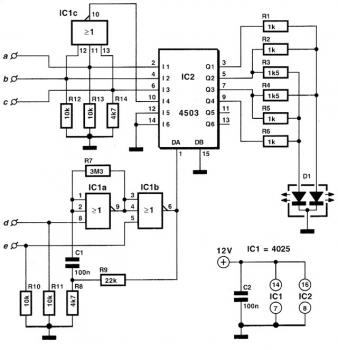Have you ever wondered how many various colours can illuminate a LED? One, two or possibly three? Making this simple circuit, you will discover it a lot more. The important component in this design is a dual LED. One such accessory includes two inside the 'slices' of different diode LED, that each and every of them produces a different color (commonly green and red). For the drive needs three pins, a common cathode and two separate roots. In this way every single of the two integrated diodes can light up as independent of one another. You'll find only two colors that may create this dual LED.
Setting appropriate percentage of the currents flowing via two separate channels of the POY is, we have other from pure green and red, orange (IR = 21G) and yellow (IG = 2IR). In this circuit, the anodes of the double LED driven by the outputs a six-point buffer tri-state technology CMOS. As opposed to most integrated family of CMOS 4000, the 4503 applied here, can supply many different loads on high currents of the order of 10 mA. The stream that goes towards the two diodes is limited by the resistors R1 to R6 whose specific values are those that attain the distinct colors and changing brightness them. The circuit was originally created to display three various situations, each expressed their the presence of logical '1 'in one of the inputs a, b, c. The entries are able to activate only one of every single time, and if none of them had been excited, a NAND gate (IC1c) ensured that the LED 'to create fourth color. In the improved version we present these days, the circuit has added another level oscillator (IC 1 a and IC1b), which produces about two pulses per second. The pulses are introduced in the entrance activation OA (pin 1) of 4503, resulting in colorful flashes. The oscillator is controlled by the of logical statements applied to the inputs 'd' and 'e'. If both are simultaneously logical '1 ', then each the oscillator and also the buffers of 4503 stay inoperative. If e = 1 and d = 1, then all buffers are driven in a state of high resistance plus the circuit absorbs the least feasible electric current (standby). The power supply circuit was initially set at 12 Volt, but all of the components that are able to work equally properly with any voltage in between 5 Volt and 16 Volt.
